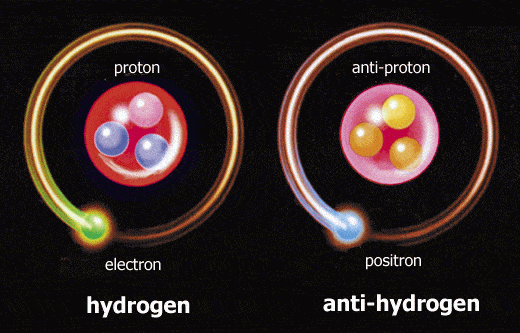A novel technique for cooling antimatter down to the point where it might become almost stationary might provide scientists with a better basis for studying one of the greatest modern mysteries today.
Antimatter, as it name implies, is the total opposite of matter and when the two meet they cancel each other out. For instance the opposite of an electron is a positron. It’s because of this fascinating behavior, however, that studying antimatter is extremely difficult, since we’re ubiquitously surrounded by matter. A great puzzling dilemma for physicists today is why is there so little antimatter present in the Universe compared to matter.

It’s theorized that after the first Big Bang sparks, equal amounts of both matter and antimatter were spewed through out the early Universe, but for some yet unknown reason matter won out. Currently, the only instances antimatter has been observed naturally are those following radioactive decay or cosmic ray collisions, and though the existence of antimatter has been proven since the 1930s only recently could it be artificially produced, and in small quantities to top it over.
With this in mind, scientists have been looking to devise ways to ease antimatter research. A recent technique that has garnered quite a bit of attention was developed by Makoto Fujiwara, a research scientist at Canada’s particle physics lab TRIUMF and an adjunct professor at the University of Calgary, along with colleagues, and is called Doppler cooling. It implies chilling anti-hydrogen (with one positron and one anti-proton) to just a tad over absolute zero Kelvin – 25 times colder than ever attempted.
The technique has yet to be proven, though an advanced prototype experimental setup is in the works, however a computer simulation showed extremely promising results.
“The ultimate goal of antihydrogen experiments is to compare its properties to those of hydrogen,” physicist Francis Robicheaux of Auburn University in Alabama said in a statement. “Colder antihydrogen will be an important step for achieving this.”
“By reducing the antihydrogen energy, it should be possible to perform more precise measurements of all of its parameters,” Robicheaux said. “Our proposed method could reduce the average energy of trapped antihydrogen by a factor of more than 10.”
Fujiwara led in 2011 a team of scientists at CERN that made the first direct measurement of antimatter’s energy and also held particles of anti-hydrogen stable for as long as 15 minutes, still a record. Comparing the properties of hydrogen and anti-hydrogen might allow scientists to explain why there is such a great quantitative gap between the two. If the two are indeed proven to exhibit totally opposite properties then a sounds basis for further study might be built.
The present technique uses precisely targeted lasers on antihydrogen in order to loose energy and chill it down. Remember, however, that antimatter and matter annihilate each other, so the key to their research is trapping antihydrogen – the scientists hope to achieve this through a system of magnetic fields.
“We want anti-hydrogen atoms as cold as possible in our trap, and by cold I mean not moving. In particular, to measure the gravitational properties, antihydrogen in our trap is still moving way too fast. So this paper has shown that the technique called laser cooling can be applied in our experimental set-up,” Mr. Fujiwara said.
The first immediate goals for Fujiwara and colleagues is to study basic properties of antihydrogen like colour, weight, how it reacts to light or gravity and so on. The laser cooling technique was described in a paper published in the Journal of Physics B.
[source]



